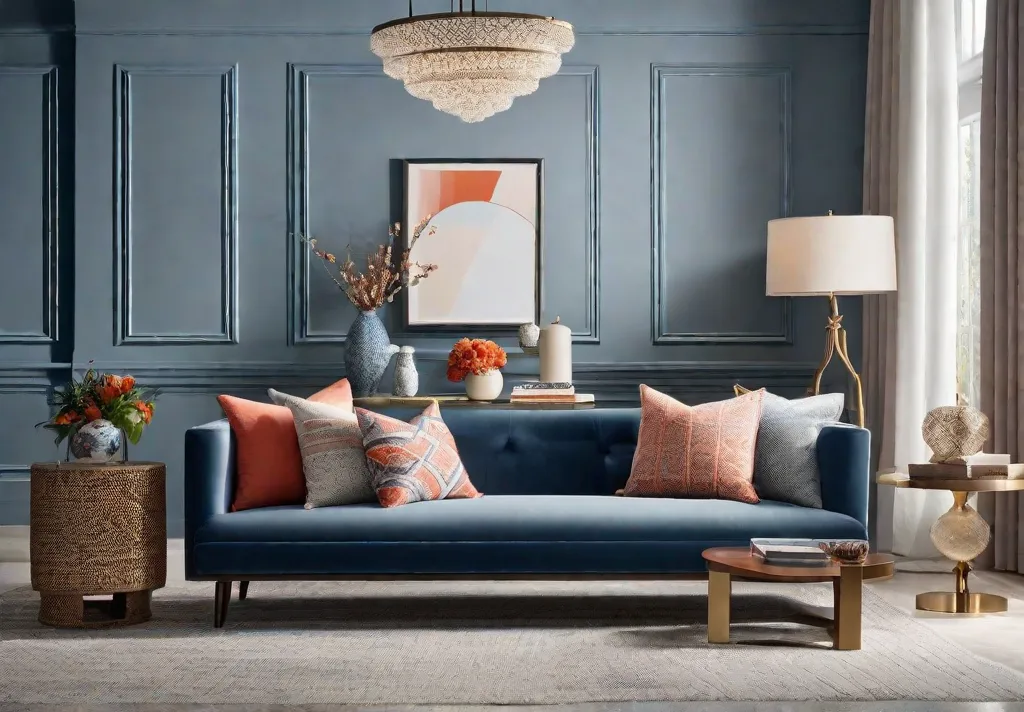The living room is a sanctuary in our homes, where families gather, creating memories and laughter. The colors of the walls set the tone for every gathering.
Selecting pigments for your walls can be challenging. You need hues that endure beyond aesthetics and colors that blend into any decor era. Let’s explore seven timeless living room paint colors that will never go out of style.
Classic White: A Blank Canvas Full of Potential
White is a timeless interior color choice. Its brightness and versatility allow other furniture and accents shine while visually expanding the space. It’s a blank canvas for layering fabrics, textures, and colors.
This color family exudes refinement, conjuring images of Mediterranean villas and beach houses, from snowy whites to warmer ivories. White enhances ornate moldings and trimmings in traditional living rooms, while its understated elegance fits into modern and contemporary settings.
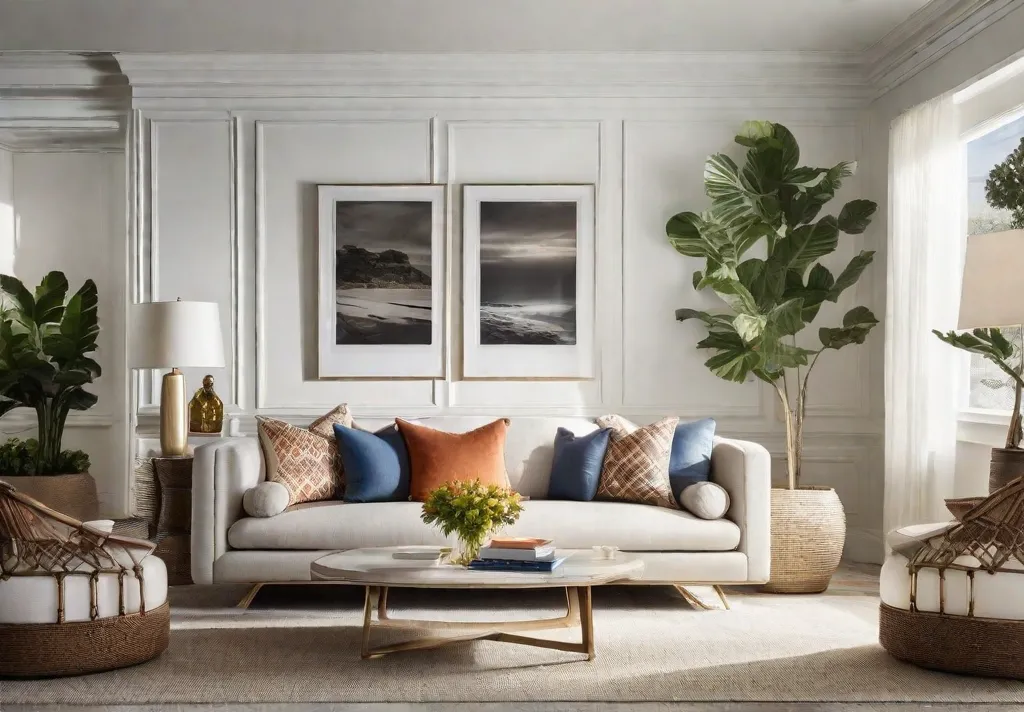
Adding character is key when working with white walls. Play with lighter and darker tones, contrasting sheens, or pops of color for depth and interest. Crown molding blended with eggshell white evokes dimension. Lacquered built-ins pop against a matte finish. Accent walls in deeper ivories or champagnes prevent uniformity. Embrace versatility and make this classic your own!
Earthy Neutrals: Warm Organic Tones
Earthly neutrals like beige, greige, and tan exude a deeper, warmer essence beyond classic white—the auditory equivalent of a smooth cello note. These muted tones celebrate textures, layering, and accent colors that enliven a space, yet luxurious.
Brown and gray intermingle with solid hues, creating depth and flexibility. Earthy neutrals, inspired by nature, convey serenity and flow, transcending design eras and promoting longevity.
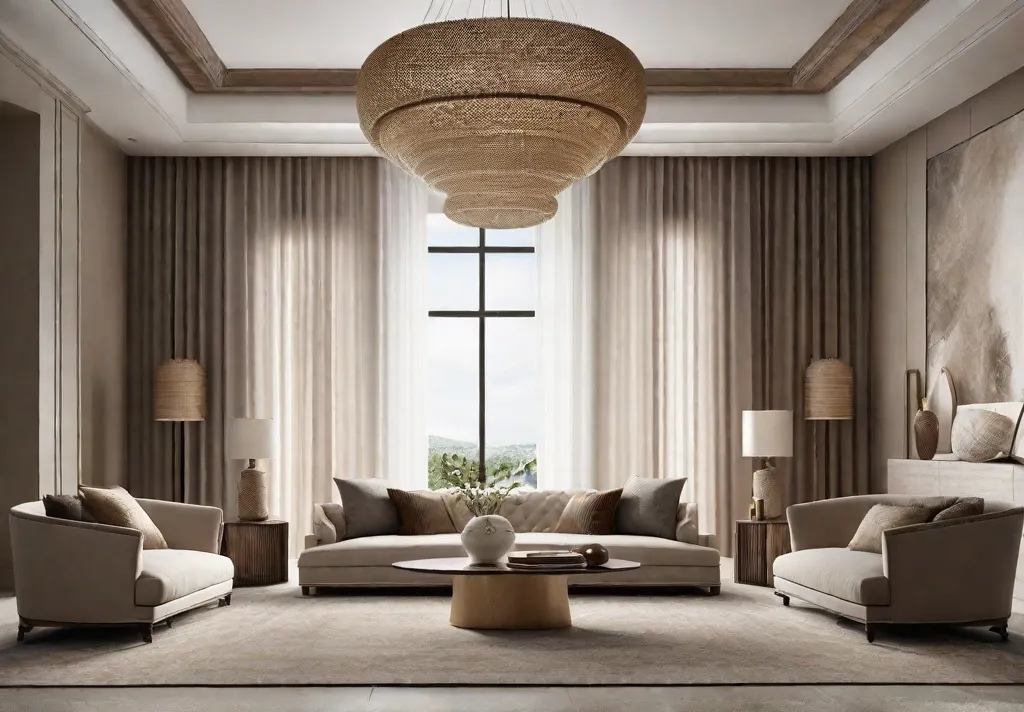
Beige living rooms evoke images of quiet Sunday mornings immersed in literature, curling up on plush sofas with steaming mugs. Tan and greige tones conjure laid-back sophistication and relaxed refinement. They integrate into any style or life stage beautifully, like a favorite pair of jeans.
Layer organic fibers and textures such as jute, linen, wool, and leather. Add accent shades like mustard yellow, ruby red, emerald green, and sapphire blue for a visually harmonious sanctum.
Soothing Blues: Tranquil Hues
Blue is the calming color, evoking tranquility. These cool hues bring to mind wide skies and oceans, offering an escape from chaos. When used in living rooms, blues promote relaxation, providing a much-needed sense of peace.
From pale sky blue to navy, this versatile color family harmonizes with whites, beiges, and earth tones. Accent hues like citrine yellow, green, and coral pink add playfulness, preventing all-blue rooms from being solemn.
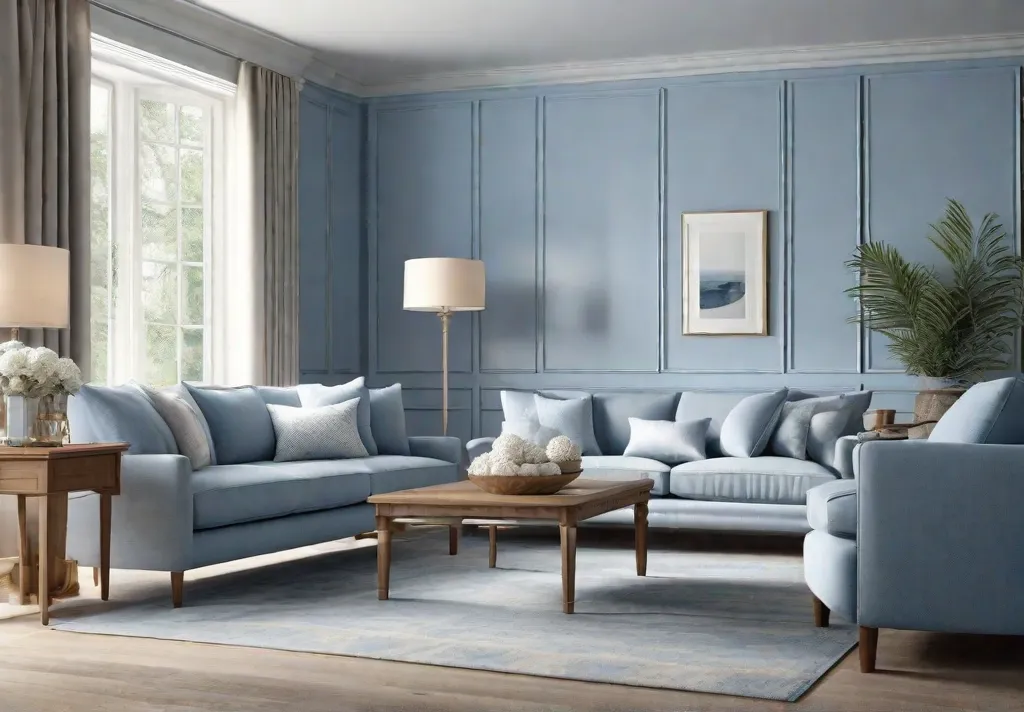
Powdery blues work well in airy, sun-drenched living rooms and pair with white trimwork and oak flooring. Deeper shades like cobalt and navy work in intimate spaces, complemented by antique brass or gold.
Explore this adaptable family of hues. Discover shades that echo the vast chromatic diversity of sea and sky. Infuse your living room with tints that transport residents into serene states of mind.
Vibrant Greens: Bringing Nature Inside
Verdant greens have surged in popularity for living room walls over the past decade. This trend celebrates our longing to reconnect with nature and imbue our interior with organic essence.
Green’s psychological associations with renewal and life energy beautifully beckon, from pale mint to rich jade. These secondary colors teem with depth and dimension, offering more versatility than simplistic assumptions may suggest.
When choosing greens, consider the size and natural light in your living room. Use lighter apple greens or soothing sages in smaller, dimly lit spaces to avoid a dark, cave-like feel. Deeper emerald and forest tones can anchor larger, sun-drenched rooms.
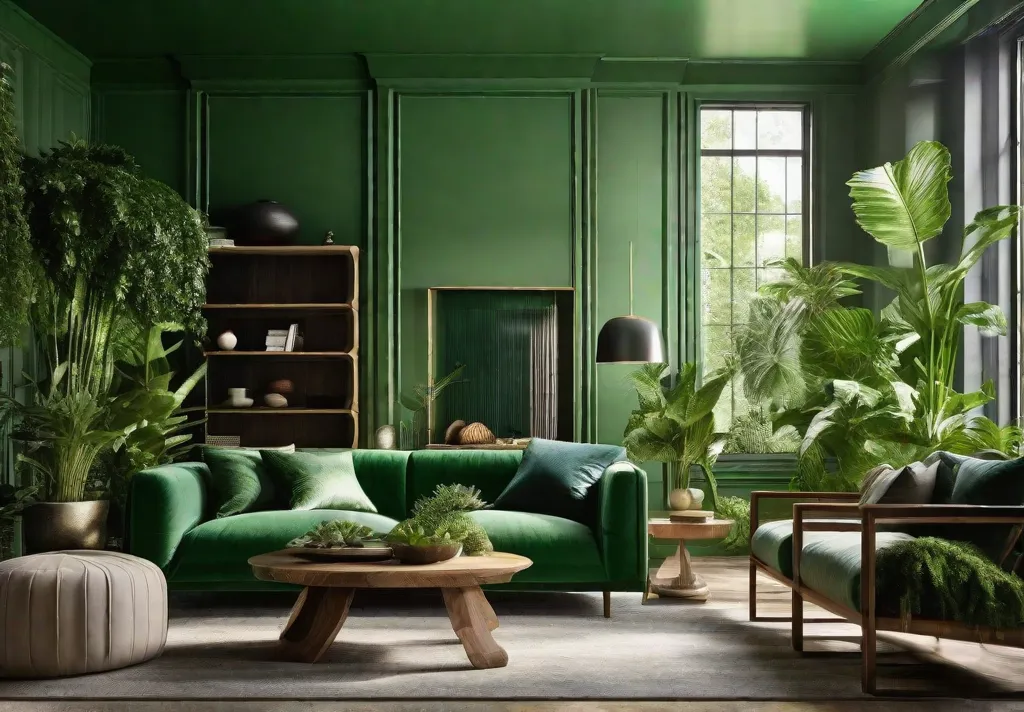
Green is a complementary hue, flowing between warm and cool tones and easily blending with beiges, blues, whites, browns, and earthy shades. Aged bronze and brass enhance its vibrancy.
Verdant greens are timeless for living rooms celebrating the natural world in urban settings. They inspire and renew while paying homage to organic origins.
Mysterious Charcoal: Sophistication in Dark Tones
On the opposite end of the color spectrum, darker somber hues like charcoal and black confer dramatic sophistication. Once deemed too bold for living rooms, these rich shades have emerged as sought-after among modern designers. When used judiciously, darker colors cocoon a space, fostering intimacy and quietude.
Pair deep onyx blacks with crisp whites for high-contrast elegance. Add metallic woods, brass accents, and colorful artwork to brighten dark rooms. For small living rooms, use deep charcoals or brown-blacks instead of pure black to avoid feeling closed in.
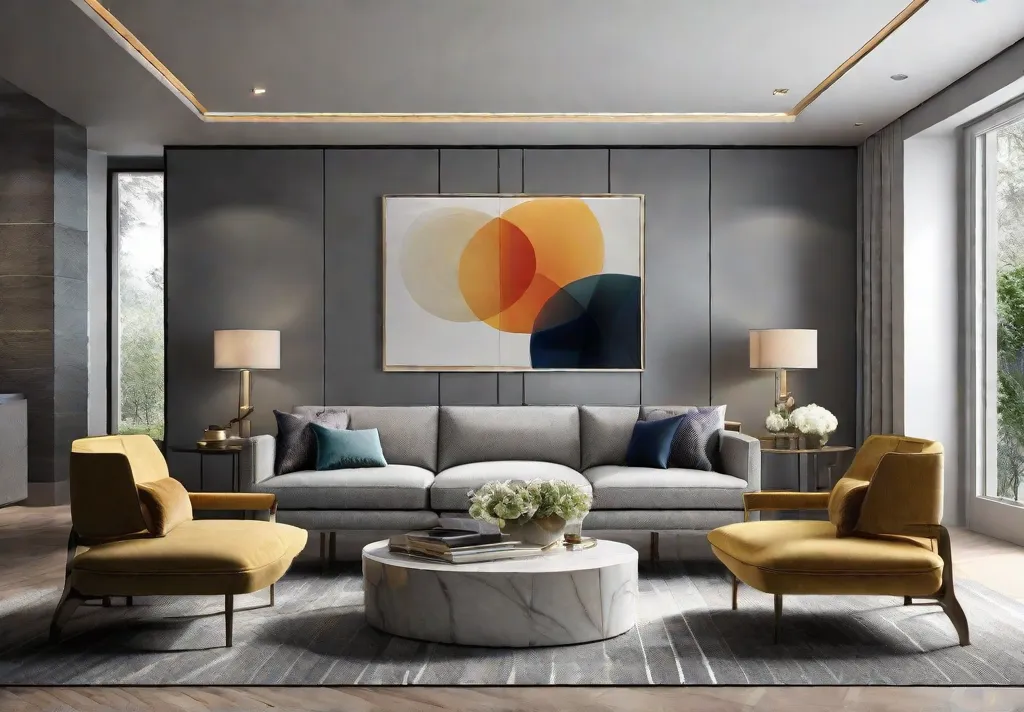
Adding depth and dimension by customizing darker tones. Mixing pitch black with a hint of color like deep purple, emerald, navy, or charcoal flows with existing furniture and personal style.
Explore the shadowy reaches of the color wheel’s outer rim. Discover hues that whisper and compel, rather than overwhelm. Craft a sophisticated, moody sanctum that celebrates the mystery and beauty of life’s darker moments.
Sunny Yellow: Infusing Positivity
Golden yellow exudes positivity and vitality. Associated with sunshine, daffodils, buttercups, and marigolds, it embodies joy and warmth. It infuses spaces with optimism and energy when applied to living room walls.
Implementation is required for radiance. Yellow encompasses incredible diversity, from pale creamy tones to vibrant red-oranges. Paler lemon and butter hues harmonize as accent colors, bolder oranges and mustard tones overwhelm easily.
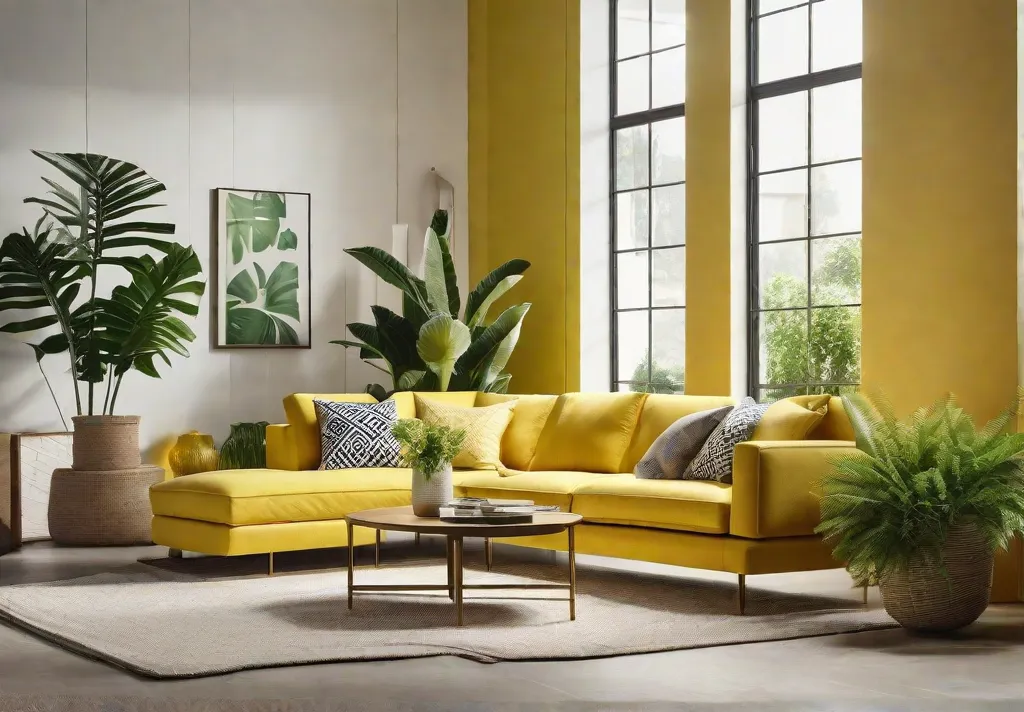
When using stronger yellows, add white to soften intensity. Use sunny colors to compensate for limited natural light in north-facing rooms. In smaller living rooms, cover one accent wall in yellow and adorn remaining surfaces with neutral beiges and whites to prevent vibrancy from dominating the space.
Complement your dose of sunshine with navy blue accents, houseplants, and wood furnishings to temper intensity. Experiment with yellow strengths and saturation levels to find your perfect personalized hue. Just don’t overuse this friendly yet powerful color.
Key Tips for Choosing Timeless Living Room Colors
Consider these fundamentals when choosing paint colors for the living room:
North-facing rooms require warmer hues, while south-facing spaces can handle cooler tones. Rooms lacking natural light need lighter shades.
Bold, darker colors suit generous spaces but could overwhelm smaller living rooms. Pale neutral tints open up constrained layouts.
Choose a color family that complements room furnishings and architectural details seamlessly.
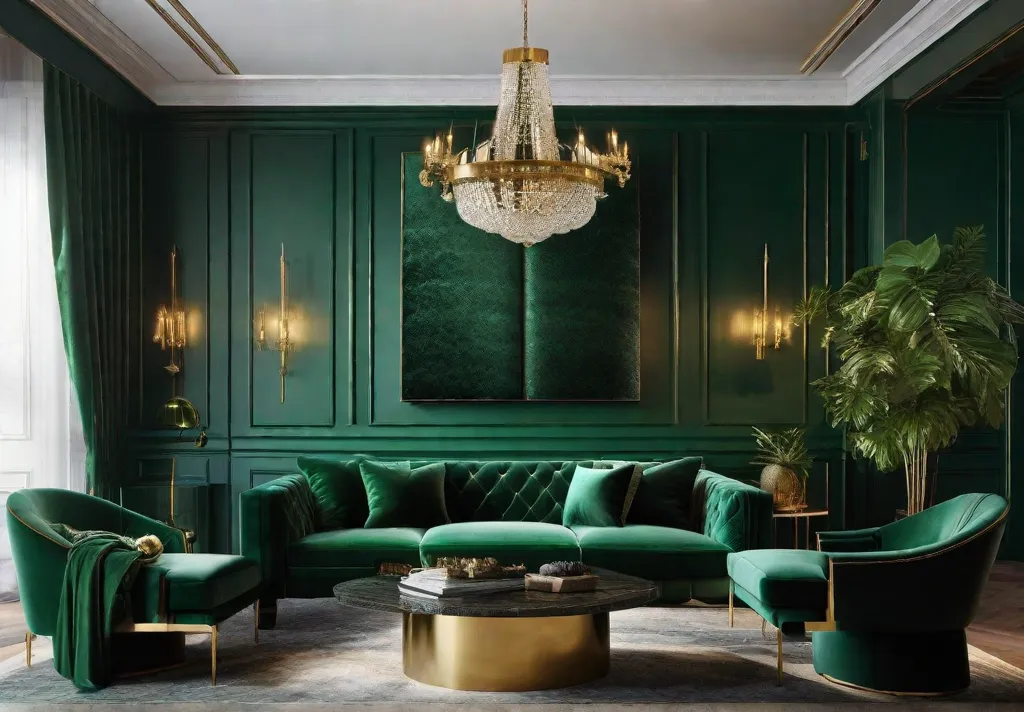
Consider current design trends, choose colors that inspire and uplift you emotionally instead of following fads.
Color Psychology: Each hue conveys emotional undertones. Cool blues relax; sunny yellows provide energy; greens renew the psyche.
Sample paint swatches on walls before fully committing. Observe how colors look in different lighting over a few days.
By combining these elements, you can find the perfect color composition for your living room—one that harmonizes with both design eras and personal style for decades.
FAQ
How often should I repaint my living room?
Most living room paint jobs stay vibrant for 5-7 years with quality application and upkeep. Note any fading, stains, or unintentional “artwork.” If the current hues still make you happy, refresh with a coat. Full repaints allow for complete transformations, changing color schemes and style.
Can I mix these colors in my living room?
Blend suggested hues across walls or accent furnishings for depth. Aim for cohesion. Complement dark navy walls with pale blue pillows. Offset white trim with champagne surfaces. Mix, match, and blend for flow.
Which paint sheens work best in living spaces?
Living rooms endure more wear-and-tear than dining rooms or bedrooms. When selecting finishes, prioritize durability and ease of cleaning over ornate high-gloss. Opt for washable eggshell or subtle sheen satin. Flat or matte paints exude cozy elegance but require gentle handling. Investing in high-grade paint for high-traffic areas is wise for long-term endurance with kids, pets, and parties.
How do I choose the right shade to complement existing furnishings and style?
When coordinating colors, begin by identifying dominant existing hues and studying accent colors in room fabrics and surfaces. Cool tones harmonize with blues, greens, and grays, while warm earth tones, yellows, and reds blend effortlessly. Pursue shades within compatible color families and avoid clashing hues. If unsure, consult an interior designer to help extract perfect shades from the vast palette available.
Final thoughts
The living room is a central part of any home, where significant moments happen. From movie nights to holiday gatherings, this shared sanctuary shelters life’s rhythm. So adorn your walls in welcoming hues that reflect personal style.
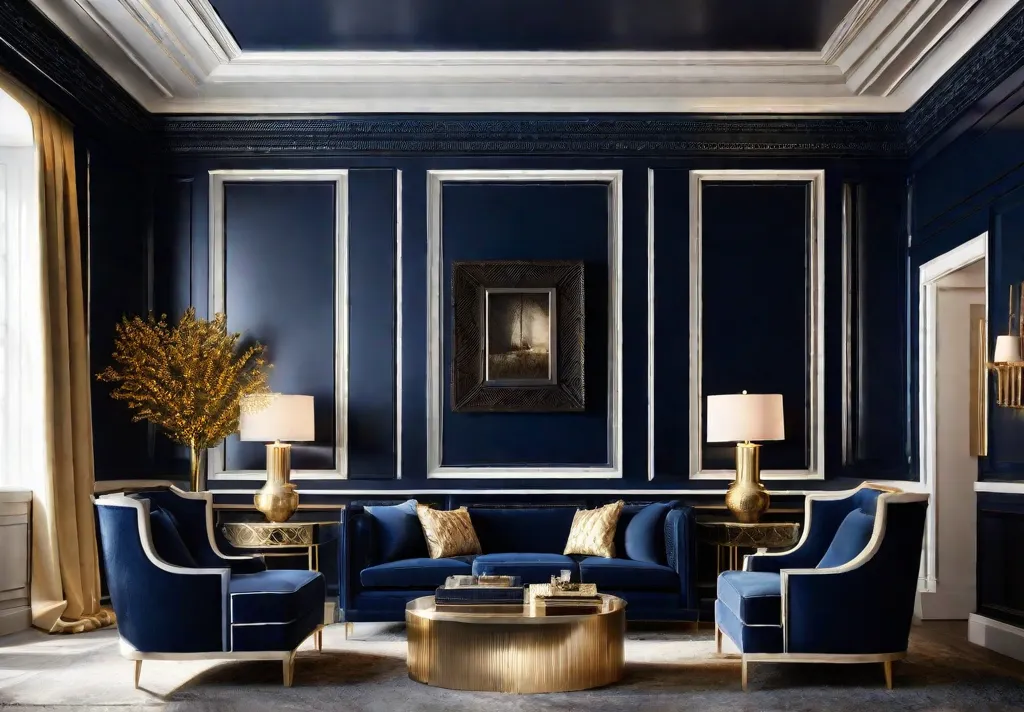
Explore suggested colors and test potential palettes to blend timelessness with originality. If your chosen shades become less appealing over time, repaint. A fresh coat in updated colors resets the mood and energy in this family refuge.
Embrace the potential of paint and transform this communal haven into a beloved sanctum for years to come. May your living room walls be graced in inspiring colors, welcoming all who enter. Settle in and savor the life within this shared oasis.
